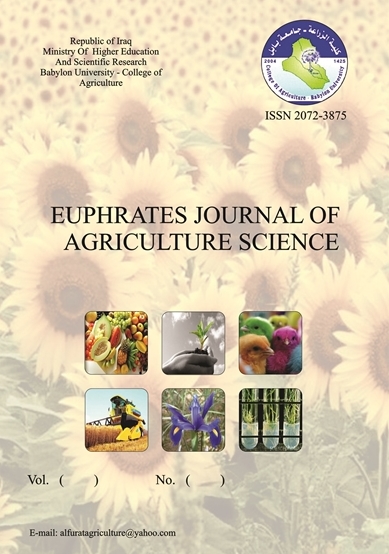Abstract
This study was conducted in the soils of Aljadwal Algharbi district in Karbala province, which is located in the region between the longitude 415656 to 426008 east and the latitude 3597981 to 369564 north, where the soils of part of the district were surveyed and included agricultural soils (cultivated) with an area of (15,252 ha), where 100 locations were identified and for four depths (0-30 cm, 30-60 cm, 60-90 cm, and 90-120 cm) by a Drilling rig (Alokr). It also revealed 8 pedons to be representative of the region, and its coordinates were determined by a GPS device. A path with a length of 14,400 m, which runs through the widest and most repeated units, has been chosen, and he horizons of the pedons have described fundamentally and morphology. It was studied the spatial variabilities for the chemical and fertile traits and for different depths using advanced statistics (time series analysis). The results showed that all chemical traits were variability and it described as highly variability and according to the scale (wilidig, 1994), except for the reaction of the soil, it was slightly variable according to this scale. The most variability traits were the content of organic matter and calcium carbonate, gypsum, Cation-exchange capacity, and electrical conductivity. As for the models that describe the variability of the chemical traits, the Autoregressive model (AR1) was the most suitable and suitable for these traits, with a percentage of (58.33%), the moving-average model (MA1), with a percentage of (29.17%), and the Autoregressive integrated moving average model (ARIMA), with a percentage of (12.5%). The results indicated that calculating the number of required samples for each of the chemical traits by random method which ranged between (3- 135 samples), the lowest samples were for the degree of soil interaction pH, the most number of samples for the soil content of organic matter by the time series analysis method and relying on self-correlation only for the chemical traits which ranged between (3-56 samples), which was the lowest number for soil interactions, and the largest number for gypsum content in the soil.
